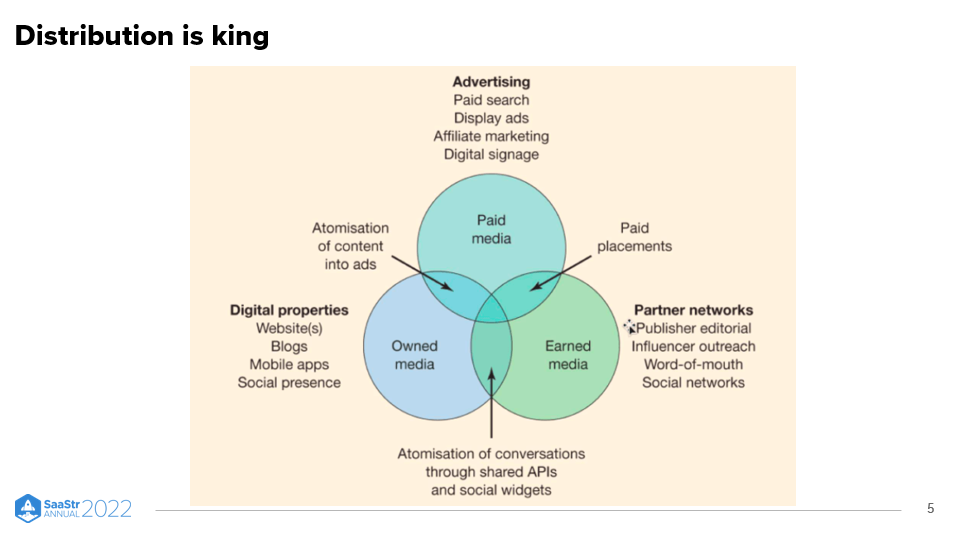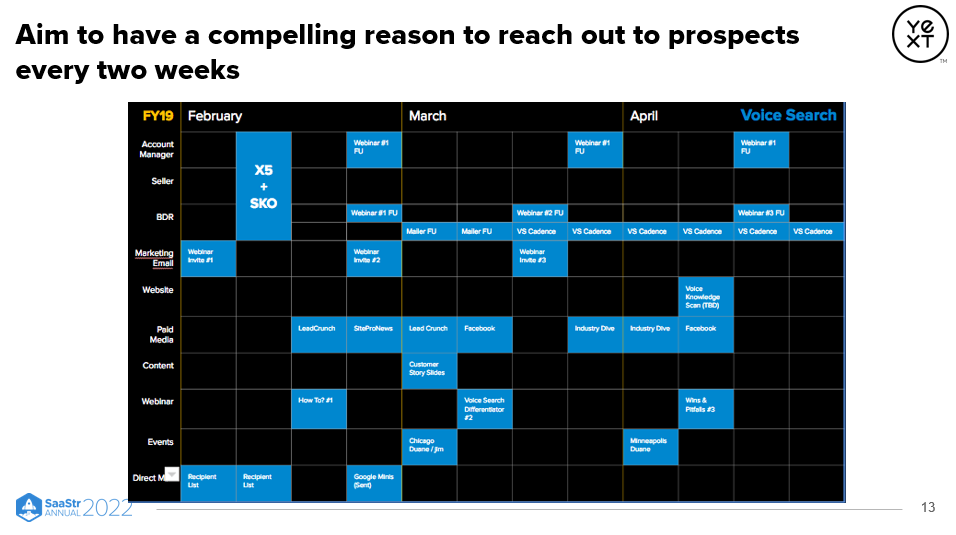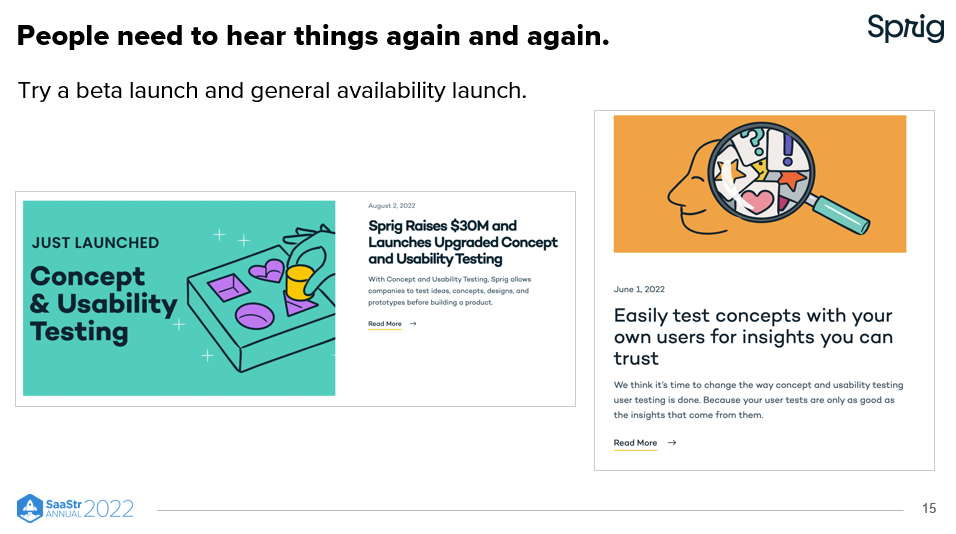Whether you’re part of a startup ready to enter the market or working at an established business ready to launch a new product, it’s critical to understand how to approach your target audience. But simply sending out a few press releases isn’t enough –– you need a strategy to reach customers and prospects.
Former Sprig CMO Elizabeth Walton Egan believes that simply putting your product out there won’t attract customers: “If you build it, they will come does not work. It really is how you go find the right people, how you get that message out there, and start those conversations to get them to understand your product and buy your product.”
In this session from SaaStr Annual, Walton Egan shares her playbook for a winning multi-channel marketing plan. Elizabeth is now CMO at Lattice.
Ready to network, learn, and level up? Join 12,500 Cloud and SaaS Founders, VCs, and Execs at SaaStr Annual for three full days of workshops, sessions, and networking — all to help you scale faster. Get your tickets.
1. Get Familiar with the Paid, Owned, Earned Media Model
As you build your marketing strategy, you’ll notice that different initiatives, collaterals, and campaigns fall into three main buckets.
Paid Media: This can be thought of as advertising. It includes things like display ads, affiliate marketing, and digital signage.
Earned Media: Consider this your partner networks. It includes things like publisher editorial, influencer outreach, word-of-mouth, and social networks.
Owned Media: This type of media comprises your digital properties. So it includes things like your website, blogs, mobile apps, and your social media presence.
From the diagram below, you can see how these different buckets may overlap. Begin to experiment and iterate on how these buckets can intersect to accomplish a cohesive multi-channel marketing plan.
2. Leverage Your Relationships
The relationships you build can mean the difference between your company’s success or failure. And this starts with personal relationships. As Walton Egan explains, “When you launch a company, when you have a product, the people that you know personally are going to be your biggest cheerleaders from day one.”
There are three types of relationships you can use to propel your company forward:
- Personal Relationships: These connections can give support at any time, but they are especially beneficial when you are launching or promoting a startup or an early-stage company.
- Customer Base: If you are already an established company about to launch a new product, your loyal customers will be great advocates.
- Influencers: If you can, find influencers in the industry to help promote your product to the market.
Remember, if you don’t have these relationships, spend some effort building them.

3. Anchor Your Marketing
Instead of simply creating your brand messaging and releasing it to the market, leverage someone else’s moment or audience to raise awareness. For example, perhaps your company sponsors or presents at a high-profile conference relevant to your business niche with press and many potential customers in attendance. This anchoring strategy propels you in front of a much larger audience and opens opportunities.
4. 1 + 1 = 3
Yes, you read that right: 1+1=3. This mathematically incorrect equation is used to illustrate that when you combine lots of events, initiatives, and tactics together over a condensed period of time, often you will see a more significant impact.
For example, say your company is presenting at a trade show or conference. Over that same week, you may publish a press release, host a smaller event for conference attendees, or release a paid sponsor newsletter. All these things together may create more awareness and drive more prospects down the funnel.

5. Have a Constant Drumbeat
After a big conference, company announcement, or product launch, you still want to keep the momentum going. Aim to have a compelling reason to reach out to prospects every two weeks. Walton Egan says, “We get tired of what we’re doing before our prospects do, before our customers do. So try to think about how you can repackage it, reframe it, or chop it up in different ways so you can share it over a period of time.”
You don’t need to reinvent the wheel to continue sharing with your audience, just reuse your content and collateral in a lot of different ways and continue to distribute it over a period of time.
6. Announce It Multiple Times
Remember, not everyone will be paying close attention to all your product launches and campaign, so be prepared to revisit and announce more than once. People need to hear things again and again, and marketers must be ready to repeat themselves.
Pro Tip: If you’re launching a new product, try starting with beta launch and a general availability launch.

Key Takeaways
- Forget the “if you build it, they will come” mentality. You need to strategize how to get your product in front of your target market.
- Familiarize yourself with the Paid, Owned, Earned model, and experiment with how different media strategies intersect to help meet your goals.
- Anchor your marketing by leveraging someone else’s audience.
- Keep your momentum going with constant news and information to share.

